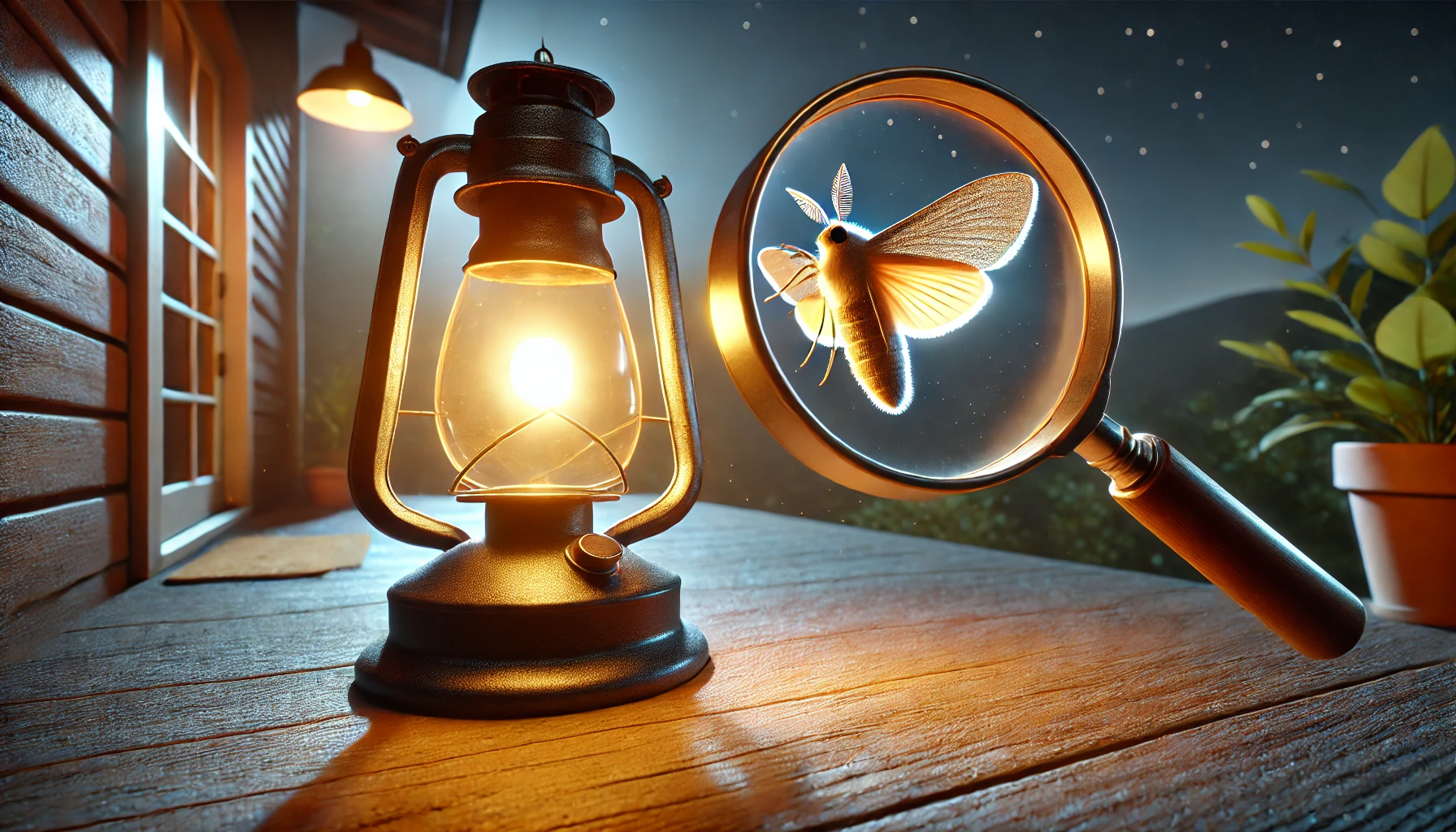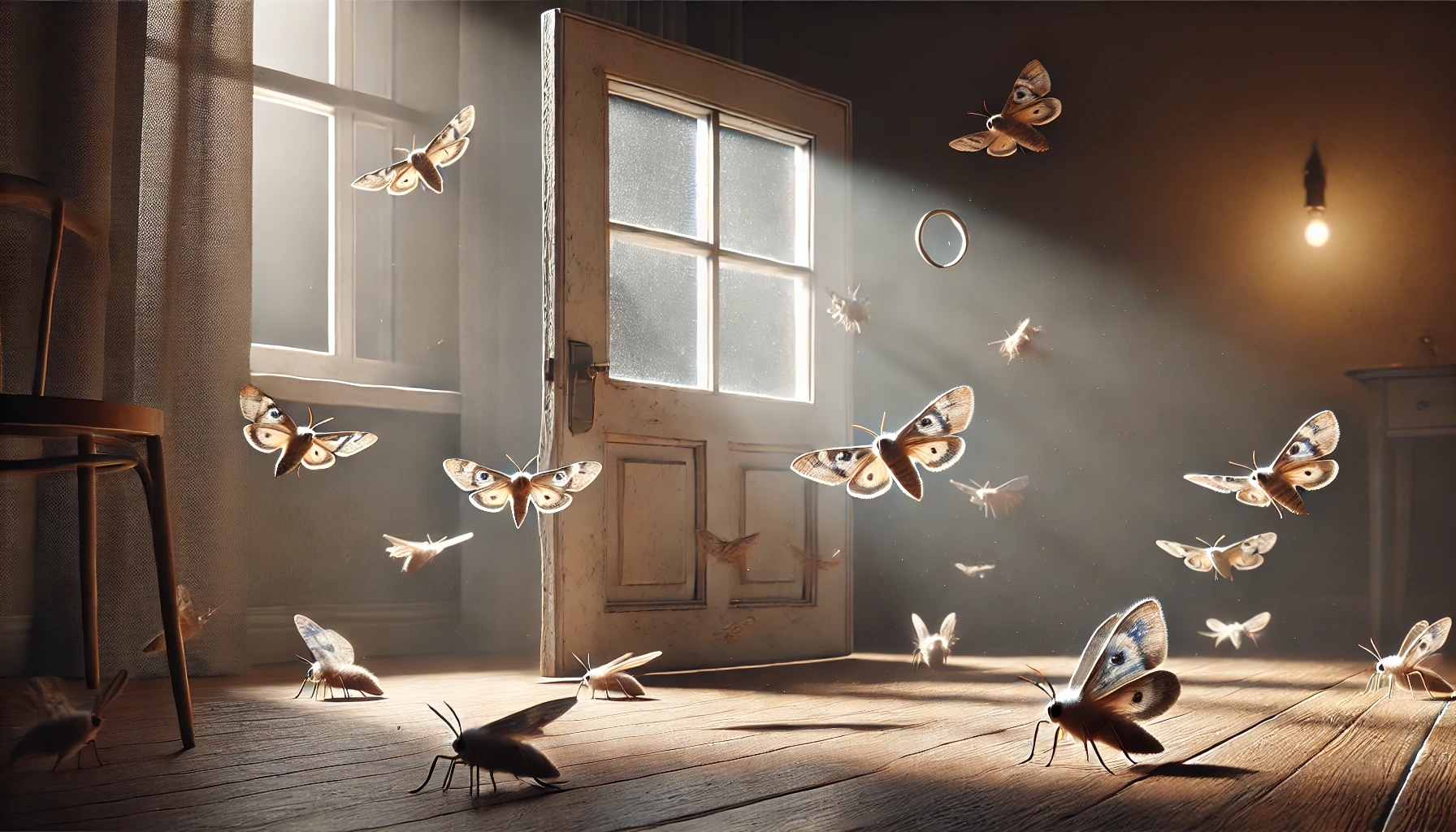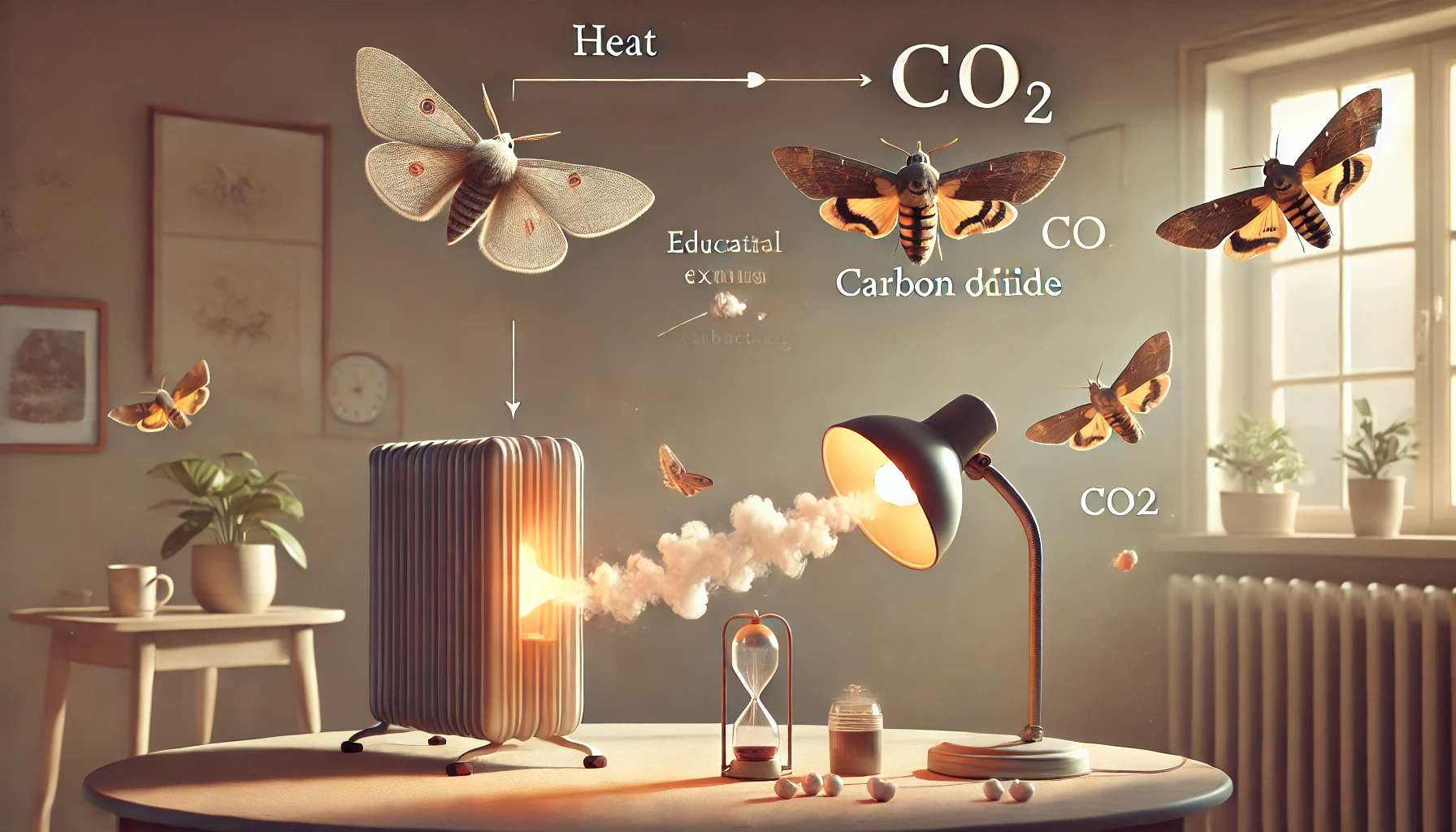Key Takeaways
- Moths fly toward your face because they are attracted to artificial lights, which confuse their navigation system.
- Moths rely on natural light sources, like the moon, to guide their flight paths, but artificial lights cause them to spiral toward these sources, often leading them directly to humans.
- Moths are not intentionally targeting you; they are simply disoriented by bright lights and your body heat, which they mistake for another light source.
- To prevent moths from flying toward you, use yellow bug lights, reduce scents outdoors, and keep lights away from seating areas.
- Moths are harmless creatures, and their seemingly erratic behavior is a result of their navigation system being disrupted, not aggression.
 1. Attraction to Light
Moths are naturally attracted to light, a behavior called positive phototaxis. In the wild, moths use natural light sources, like the moon, to navigate. This method helps them fly in straight lines, but artificial lights confuse them. When moths encounter an artificial light source, they try to keep a steady angle to it. However, the closeness of the light causes them to spiral inward, which can lead them directly toward your face.
1. Attraction to Light
Moths are naturally attracted to light, a behavior called positive phototaxis. In the wild, moths use natural light sources, like the moon, to navigate. This method helps them fly in straight lines, but artificial lights confuse them. When moths encounter an artificial light source, they try to keep a steady angle to it. However, the closeness of the light causes them to spiral inward, which can lead them directly toward your face.
- How It Works: When a moth tries to align itself with a distant light source, like the moon, it maintains a constant angle. However, with nearby lights, this alignment causes a spiral flight path, which often results in the moth flying erratically toward objects—like your face.
- Tip: Moths are more likely to be attracted to bright lights at night. Turning off unnecessary lights or using dimmer lighting can reduce their attraction.
- How Artificial Lighting Affects Moths: Moths rely on the angle of light to guide them, but when they’re close to an artificial light, their navigation system becomes overwhelmed. This results in spiraling flight paths that often bring them too close to humans.
- Tip: Moths tend to get disoriented around bright, close-up lights. Keeping outdoor lights dimmer and farther away can reduce attraction.


Not getting a solution?
Get your free pest control estimate today!- How It Happens: When indoors, moths fly toward the brightest spot, assuming it is their exit. This can cause them to fly toward windows or doors where the light shines through.
- Tip: Ensure windows and doors are properly sealed and use screens to keep moths from entering your home. You can also try to keep your environment well-lit to encourage moths to fly toward the exit.
 4. Attracted to Heat and Carbon Dioxide
Moths are sensitive to heat and carbon dioxide (CO2), both of which humans naturally emit. The warmth of your body and the CO2 you exhale can attract moths. This is why moths might fly toward you, especially in dark spaces where other stimuli are minimal.
4. Attracted to Heat and Carbon Dioxide
Moths are sensitive to heat and carbon dioxide (CO2), both of which humans naturally emit. The warmth of your body and the CO2 you exhale can attract moths. This is why moths might fly toward you, especially in dark spaces where other stimuli are minimal.
- Why Moths Are Attracted to Heat and CO2: Moths have a keen sense of smell and can detect heat and carbon dioxide from a distance. In a dimly lit room, they are more likely to be drawn toward the heat from your body or the carbon dioxide you exhale.
- Tip: If you’re sitting still, moths may mistake your warmth and breath as an attractive target. Keeping your environment cooler or less humid might help deter them.
 5. Erratic Flight Patterns
Some moths, especially species that are preyed upon by bats, use erratic flight patterns as a defense mechanism. This unpredictable flight style helps them avoid being caught. While trying to escape predators, they might end up flying straight at your face. Their flight patterns may look like random flapping, but they serve an important survival purpose.
5. Erratic Flight Patterns
Some moths, especially species that are preyed upon by bats, use erratic flight patterns as a defense mechanism. This unpredictable flight style helps them avoid being caught. While trying to escape predators, they might end up flying straight at your face. Their flight patterns may look like random flapping, but they serve an important survival purpose.
- Why Moths Fly Erratically: Moths evolved to exhibit erratic flight patterns to avoid predators like bats. This flight strategy confuses predators, making it difficult for them to catch the moth.
- Tip: Moths’ erratic flight is often a defense strategy. By avoiding bright lights and maintaining a quiet, stable environment, you reduce the chances of attracting them.
 6. Curiosity and Environmental Exploration
Moths are naturally curious and often explore their surroundings, especially in search of food or mating sites. Certain smells, bright colors, or the presence of food can draw them closer to humans, which might explain why they fly toward your face. While they might be searching for food or a mate, your face could simply be a convenient spot to land.
6. Curiosity and Environmental Exploration
Moths are naturally curious and often explore their surroundings, especially in search of food or mating sites. Certain smells, bright colors, or the presence of food can draw them closer to humans, which might explain why they fly toward your face. While they might be searching for food or a mate, your face could simply be a convenient spot to land.
- Why Moths Are Curious: Moths use their sense of smell and sight to navigate their environment, which can sometimes bring them closer to humans, especially if they are attracted to scents like those from food or perfumes.
- Tip: Keeping your living spaces clean and minimizing strong scents, like food or perfumes, can reduce the likelihood of moths being attracted to your area.
How to Prevent Moths from Flying at Your Face
- If you’re tired of moths flying toward your face, there are several preventive measures you can take to reduce their attraction and avoid encounters:
-
Use Yellow or Amber Lighting: These light colors are less attractive to moths, reducing their attraction to your living space compared to white or ultraviolet lights.
-
Install Screens on Windows and Doors: Screens allow ventilation while keeping moths out of your home, reducing the chances of them flying inside.
-
Limit Light Exposure: Turn off lights near windows and doors or use motion-activated lights outside to minimize moth attraction.
-
Clean Regularly: Keep your home free of food scraps, crumbs, and organic matter that might attract moths looking for food sources.
-
Use Natural Repellents: Lavender, cedarwood, or eucalyptus scents can deter moths. Use essential oils or dried sachets in areas where moths tend to gather.

Conclusion: How to Take Action
Understanding why moths fly toward your face is key to minimizing their presence in your home. By following the simple steps above, you can reduce moth encounters and make your living space more comfortable. If you’re dealing with a more significant moth problem or want to take a more proactive approach, consider contacting pest control professionals for expert help. Get a free pest inspection today! If you feel things have gone out of control, it is advised to contact pest control professionals. Our team can provide a customized approach to protect your home effectively.Visit our Species, Control, and DIY Guide sections for additional resources on moths and ways to tackle a moths infestation.





